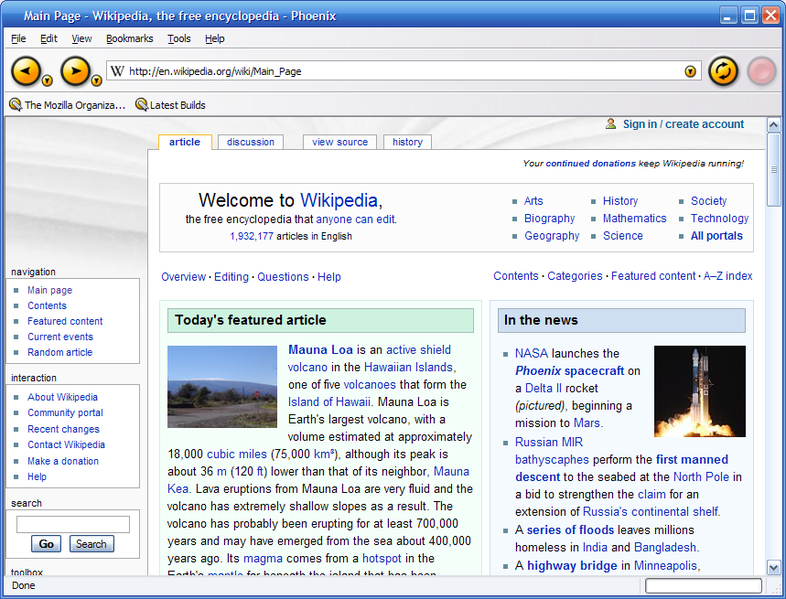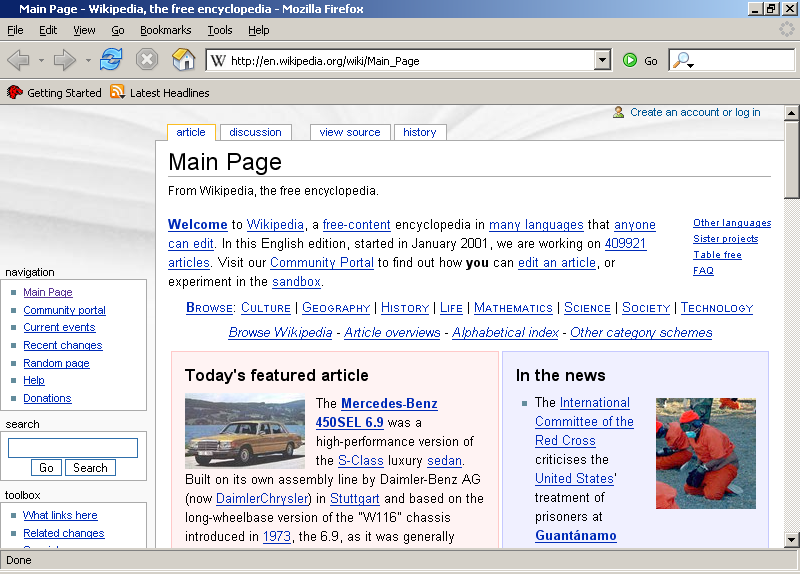Tweet
Here it is, the much awaited part eight of my 'A Brief History of the Web' series. I've been super busy, between the lab, Blogcritics and Dragon Blogger, but I apologize for the delay.
Here's your opportunity to catch up with the series, my most popular to date:
In this part, we return to the browser wars.
In the 1990s, the fight was between Netscape Navigator and Microsoft Internet Explorer. Netscape's browser debuted in 1994, and IE debuted in 1995. People used to design web pages better for the standards of one browser or another. Many web designers thought, if you're using Netscape, for instance, and their site says 'Best Viewed In Internet Explorer', you would of course click on the download link, and install IE just to view their website! Of course, their website was so awesome that you'd be compelled to do just that. Well... no, not really.
 |
| Ha, I think this is the only time I'll ever use an animated GIF in this blog... |
As the year 2000 passed, Netscape quickly lost market share. But, that wasn't the end for Netscape's Mozilla user agent string!
Mozilla was originally a codename for Netscape Navigator. As of 1994, the main web browser was Mosaic (see parts one and two) and Mozilla meant 'Mosaic Killer'.
The Mozilla Organization was founded in 1998, by Netscape programmers, to create a successor to Netscape Navigator. By 2003, it became a funded non-profit organization renamed the Mozilla Foundation.
In 1998, the source code behind the Netscape Communicator suite was released open source under the new Netscape Public License. The first web browser to come out of the new Mozilla project was Phoenix 0.1, released in September 2002, but only as a binary for testing.
 |
| This image, and the other browser shots here are courtesy of Wikipedia |
The first publicly available version was Firefox 1.0, in late 2004. They couldn't use the Phoenix name, a company named Phoenix Technologies weren't very happy. So then, Mozilla tried the name Firebird, but the Firebird Database Server wasn't happy with that either. Firefox was the next option, and the one that stuck.
Here's what that very first public version, Mozilla Firefox 1.0 looked like:
As Firefox 2 and 3 were released, the browser quickly gained market share, taking a major bite out of IE. The browser wars were changed, forever.
Firefox was the browser to introduce tabbed browsing, something I would've loved to have as a teenager in the 1990s. I used to run multiple browsers, so that I could enjoy a web page while waiting for another to DOWNLOAD. It was kind of taxing for a system using 128 MB RAM. Ah, those were the days.
Opera, which didn't gain major market share, but has a significant sliver of the pie (about 4%), was actually introduced in December 1996 by Norway's Opera Software. They are now up to an initial alpha release of 11.
Aside from Opera's relatively lean code, what also sets Opera apart is their focus on accessibility. Options include having key commands for all actions, mouse gesturing, and voice control.
Apple entered the browser wars a lot later than Microsoft did. Their Safari browser publicly debuted in January 2003, and became the default web browser for Mac OS X 10.3 'Panther'. Before Safari, the web browser most frequently used on Macs was the Mac version of IE. Microsoft no longer supports a Mac version of their browser, so IE now only runs in Windows OSes.
Safari is now up to 5.0.2. It's a pretty good browser, it works really well with HTML5 and CSS3. They started a Windows version in 2007. The main reason why I wouldn't recommend Safari is because it's Crapple! (See Why I'll never spend a dime on Apple products...) There's no version of Safari for GNU/Linux OSes like the one I'm using, as Apple likes to pretend that Linux distros don't exist. I could run Safari for Windows in Wine, but why would I want to?
My 'A Brief History of the Web' will continue soon. Until then, I have lots more in store for you!
kimcrawley.com
twitter.com/kim_crawley
blogcritics.org/writers/kim-crawley/






I like your Blog's overall look. The history lesson was helpful and enlightening. I would be interested in learning how you developed such a following on Twitter. I have experience with Web design dating back to the mid 90s when we owned a B&B Inn and there were few professionals to assist in creating a functional site for the business. I hope you will take a look at Hugh Cares! and provide me with your input.
ReplyDeleteI've just bookmarked your blog. Thanks!
ReplyDeletenormally i dont comment, but i feel the need to.
ReplyDeleteyou know mac OSX is built on BSD right?
RIGHT?